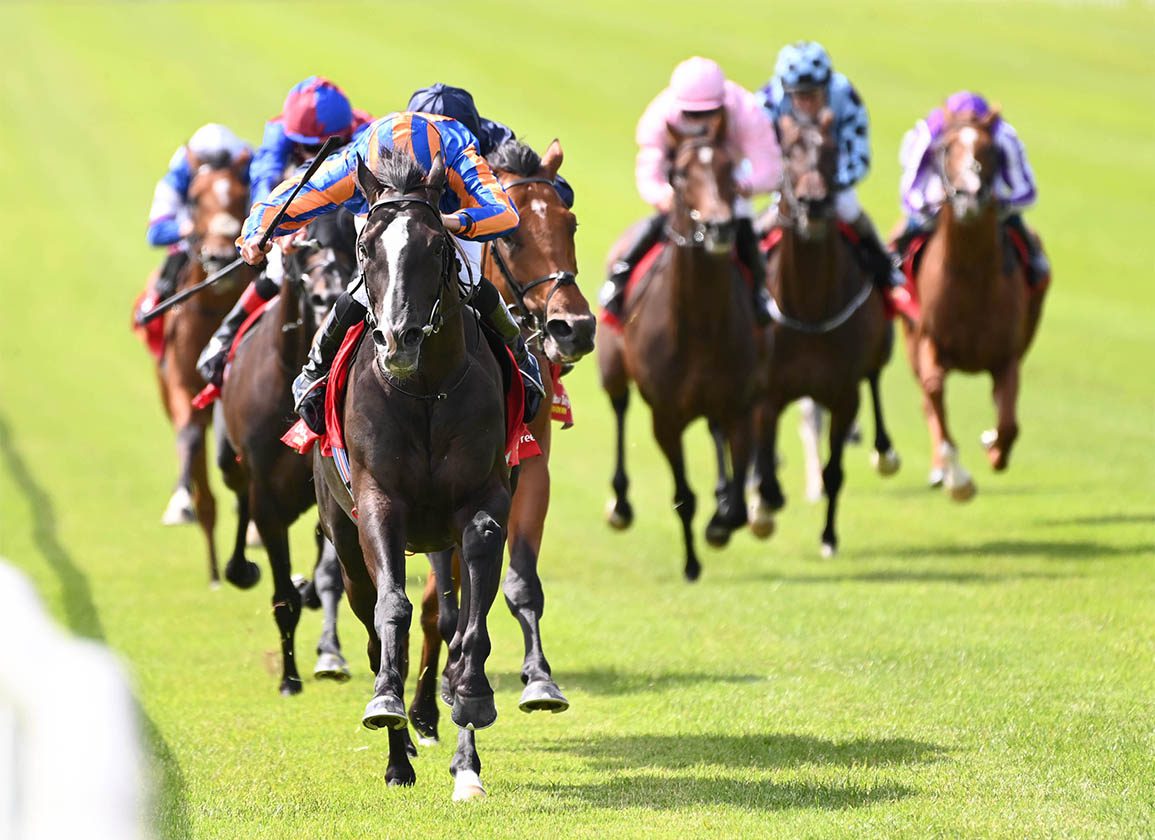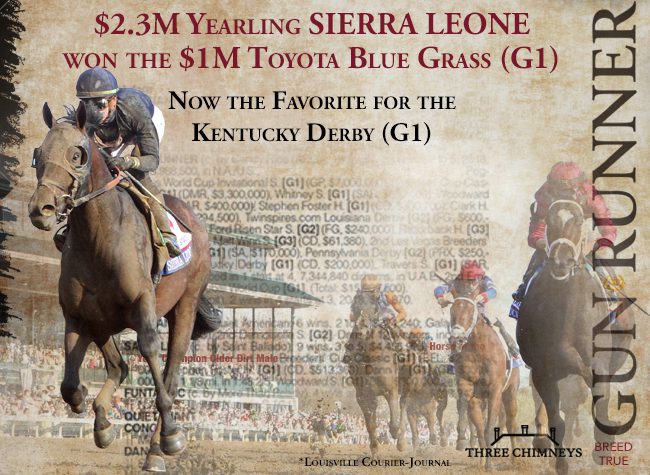By Emma Berry
Since the publication of Patrick Cooper's letter suggesting that the Irish Derby should be shortened in distance we have had a predictably mixed response in correspondence on the subject.
You can find Cooper's letter in full here. In essence, it highlights the fortunes of two Frankel colts, the Irish Derby and Grand Prix de Saint-Cloud winner and Arc runner-up Westover and the Dewhurst and 2,000 Guineas winner Chaldean, both of whom raced for Juddmonte. The latter is now a Juddmonte stallion at Banstead Manor Stud, while Westover is about to embark on his first season for the Yushun Stallion Company in Japan.
It is worth pointing out that another son of Frankel, the Derby and King George winner Adayar, plus his fellow King George winner Hukum, have both also been exported to Japan. This lack of a Flat stud berth in Europe is not a problem solely affecting Irish Derby winners, though admittedly the last three winners prior to Auguste Rodin are all now at Coolmore's National Hunt division, along with another King George winner, Pyledriver.
In the cases of Westover, Adayar and Hukum, however, there are also extenuating circumstances, up to a point. It is easy to understand that neither Darley nor Juddmonte want to retire two new sons of Frankel to their stallion units for the forthcoming season. Juddmonte, after all, has the goose who lays the golden eggs, Frankel himself, while Darley has Cracksman, who has recently been joined by Triple Time. Like Chaldean, the latter is a Group 1-winning miler and therefore, in the current climate, deemed to be an easier sell to breeders. It is a depressing fact, but I can see that it makes business sense.
Hukum is of course a son of Sea The Stars and, had his full-brother Baaeed not retired to Shadwell's roster the year before him, then it is hard to imagine that homebred Hukum would have joined Adayar on the plane to Darley Japan, despite the retirement of Mostahdaf – yet another Frankel – this year.
Cooper ended his letter with the plea: “Shorten the Irish Derby.”
He is not alone in considering this the best option. John Hammond, trainer of one of the best Irish Derby winners of the modern era in Montjeu, agrees with him, and said, “I was always in favour of the Prix du Jockey Club being reduced to 2,100m, even though it wasn't unanimously popular at the time.”
The difference then though was that the shortening of the Jockey Club coincided with the extending of the G1 Grand Prix de Paris, which is also only open to three-year-olds and has been run over 2,400m since 2005 (having also been run at up to 3,100m in its history, and at 2,000m from 1987 until the most recent change).
Hammond added of the Prix du Jockey Club, “It was silly having two 2,400m Derbys so close to each other while the only 2,000m Group 1 for three-year-olds only was the Lupin which was effectively a Derby trial and frequently a weak race. The Jockey Club is a better race now and I would imagine the average field size has increased too. Everyone has a crack now, the milers, mile-and-a-quarter horses and mile-and-a-half horses. Last year a champion 2,400m horse won and a top miler was second.”
Ireland has no such option to alternate between Group 1 races for three-year-olds. If the Irish Derby is shortened the only Group 1 race beyond 10 furlongs and available to three-year-old colts would be the Irish St Leger in September, which is also open to older horses. How can Ireland pride itself on being the cradle of the Thoroughbred if this becomes the case?
Hammond is not the only supporter of Cooper's argument. Charlie Murless also got in touch to say, “I hate to say it because I grew up on the Curragh, and all my life Irish Derby Day was a very special day and a very special race. Sadly no longer, for a number of reasons (a large number!) in addition to Patrick's excellent breeding rationale. The distance must be changed.”
We can count Hammond as Irish-assimilated despite being English-born and a long-term resident of France because he spent many of his formative years in Ireland. Cooper and Murless, too, have longstanding ties to the race and feel that it must be shortened. Is that the answer though? I do not believe so, but then I live on the other side of the Irish Sea.
Another Brit, Gerard West, contacted us with a strongly-worded email. “This would be catastrophic for Irish and European racing,” he said.
“The very foundations of our racing are based on our variety of race distances, something that has attracted breeders from all over the world. Breeders are no longer breeding to race, they're breeding for the yearling and foal sales ring. Stallion masters are recruiting colts for that purpose too.
“For some years now come Derby time it's not a matter of who's going to win but more a matter of who's going to stay. We not only need staying types for the Flat but National Hunt too.”
We all have a metaphorical hill on which we would die, and mine is that if it ever comes to pass that the Derby is shortened from a mile and a half I would find it hard to continue my association with racing, notwithstanding the fact that it was a mile race for its first four runnings. Of course Derby Day is now nothing like Frith's great painting of the 1850s depicting all manner of human life on the Epsom Downs.
The painter described in his autobiography his first visit to Epsom in 1856: “My first Derby had no interest for me as a race, but as giving me the opportunity of studying life and character it is ever to be gratefully remembered. Gambling-tents and thimble-rigging, prick in the garter and the three-card trick, had not then been stopped by the police.”
Whether or not we are to be grateful that the police are now more preoccupied with animal rights protesters is a moot point, but Derby Day was always a great occasion for all walks of society. It is less so now, but in England the day and the race still feel special.
Is that the same in Ireland? I have been at the Curragh for the Irish Derby too infrequently to know, though Alamshar's downing of Dalakhani is a race that will stay with me for as long as I retain my memory. But that was two decades ago, and straight after some truly special years of the race being won by Montjeu, Sinndar, Galileo, and High Chaparral.
If Irish Derby Day no longer feels special, surely it is the occasion that needs work as much as the race itself. The recent switching of days and times can't have helped it to retain its identity and importance for racegoers.
Since Montjeu's time the resurgence of Ballydoyle in the Aidan O'Brien years has also occurred. The trainer won his first Irish Derby in 1997 with Desert King and has claimed another 14 victories since then. Has this domination aided the race's demise, or without the support of Coolmore would it have dwindled further? It is worth noting that between 1980 and 2000, the race was won by 14 non-Irish trained horses from 11 different stables. This century, that number has been reduced to four: Hurricane Run (trained in France), and Jack Hobbs, Hurricane Lane and Westover (from Britain). A reduction in overseas challengers is certainly an issue, but then there are not too many stables beyond Ballydoyle which regularly field a runner in the Derby at Epsom either.
There are implications beyond Ireland for the race being shortened, including what effect it may have on the Eclipse, which last year was run six days after the Irish Derby. Admittedly, in 2023, both races were won by colts from Ballydoyle who would have been kept apart anyway. In Westover's year, he would surely have won the Irish Derby had it been over 10 furlongs, but would that have increased his commercial appeal enough to have pushed Chaldean aside? I don't believe so.
We are venturing towards a situation of the tail wagging the dog. We need a balance in our breeding because we need sprinters, we need milers, we need middle-distance horses and we need stayers. That is the beauty and the allure of racing in Europe: the variety, underpinned by Classic bloodlines in order to achieve the pinnacle of producing that rare horse who has the class and turn of foot to race over a mile and a half at the top level. Don't think for a moment that that's a slow horse.
It is a self-fulfilling prophesy that if we stop standing and using Derby winners and their like at stud, then sooner or later we won't be able to breed horses to run over that range of distances. In fact, it is easy to envisage the day when horses can barely stay the mile of the Guineas. Good luck then trying to sell our racing product overseas. Why would they want to buy the same horses they can breed at home?
The two best horses in the world last year, Equinox (Jpn) and Ace Impact (Ire), both won major Group 1 races over 10 furlongs, but it hurt neither of their careers to win over a mile and a half. In fact, the Japan Cup and the Arc were respectively their crowning glories.
Ireland has a long way to go to return its once-special race to its halcyon days but it should try, whether through a different approach to race programming for budding middle-distance colts, breeder incentives, or a significant bonus connected to the Irish Derby for horses who have won a Classic elsewhere. But whatever else happens, do not shorten the Irish Derby.
Not a subscriber? Click here to sign up for the daily PDF or alerts.






